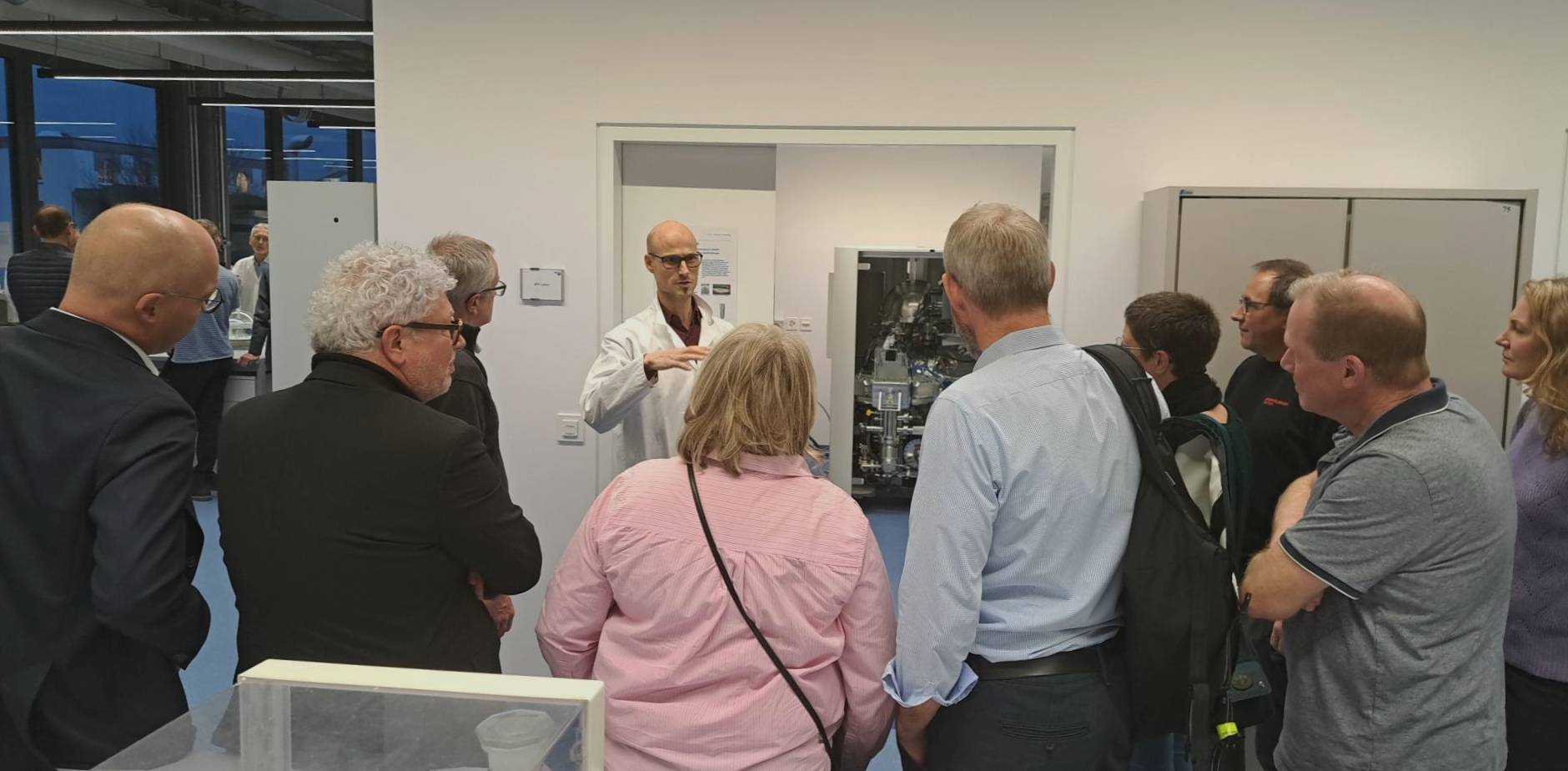RMS Foundation
Robert Mathys-Strasse 1
2544 Bettlach
Switzerland
Phone +41 32 644 2000
In an X-ray photoelectron spectrometer, electrons are excited by X-rays so strongly that they leave their atoms and ultimately exit the sample surface (XPS-Flyer). The energy of these photoelectrons is measured and used to calculate their binding energy, enabling a qualitative and quantitative determination of the chemical composition in the top 5 to 10 nm of the surface.
With this technique, all elements except hydrogen and helium can be detected, and their binding states can be analysed. The detection limit is approximately 0.1 at%, corresponding to about 1 ng/cm² on the sample surface.
Our spectrometer is suitable for all standard analyses and is particularly notable for its ability to investigate micrometer-sized structures from 5 µm.
Whenever possible, we carry out our testing services in accordance with or based on these international standards:
We use our XPS for quantitative surface analysis of all elements (except H and He) and oxidation states. Examples of applications are
In addition to the standard analysis, there are various other options:
We can analyze all vacuum-resistant metallic (including magnetic) and non-metallic solids and powders.
We generally recommend 3 measurements, e.g. 3 measurements on one spot and 3 next to it as a reference. This ensures that the results are statistically relevant.
Yes, we are the only laboratory in Switzerland to offer XPS analyses accredited to ISO/IEC 17025.
Since 1995, the services of our materials testing laboratory have been accredited according to ISO/IEC 17025. Our QM system is ISO 9001 certified.
Here you will find our latest blog posts.

RMS Foundation
Robert Mathys-Strasse 1
2544 Bettlach
Switzerland
Phone +41 32 644 2000
E-Mail
The RMS Foundation will be closed from 24 December 2025 through 2 January 2026. We will be pleased to assist you again from Monday, 5 January 2026.
Subscribe to our Info-letter, and we will inform you about 10 times a year about current developments in the fields of material testing, research, and knowledge transfer.